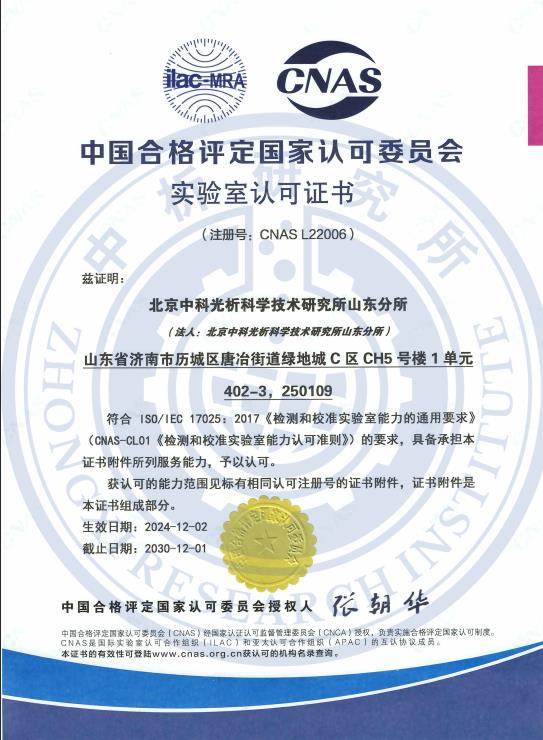外观-形态检测
1对1客服专属服务,免费制定检测方案,15分钟极速响应
发布时间:2025-07-17 09:17:47 更新时间:2025-07-16 09:17:47
点击:0
作者:中科光析科学技术研究所检测中心
1对1客服专属服务,免费制定检测方案,15分钟极速响应
发布时间:2025-07-17 09:17:47 更新时间:2025-07-16 09:17:47
点击:0
作者:中科光析科学技术研究所检测中心
Appearance-morphology detection is a critical quality control process in various industries, involving the systematic examination and evaluation of an object's external characteristics, such as shape, size, color, surface ure, and structural integrity. This form of detection plays a vital role in ensuring product reliability, safety, and compliance with design specifications across sectors like manufacturing, automotive, aerospace, consumer goods, and medical devices. By identifying defects early—ranging from minor surface flaws to major dimensional deviations—it helps prevent costly recalls, enhances customer satisfaction, and supports regulatory adherence. The importance of appearance-morphology detection has grown with advancements in automation and digital technologies, enabling real-time monitoring and high-precision assessments in production lines. For instance, in automotive manufacturing, it ensures components like engine parts meet exact tolerances, while in electronics, it verifies the integrity of circuit boards to avoid failures. This introduction highlights the foundational aspects, emphasizing how modern techniques combine human expertise with sophisticated instrumentation to achieve consistent, objective results and drive continuous improvement in product quality.
In appearance-morphology detection, the primary projects focus on evaluating specific attributes that define an object's external form and condition. Key detection projects include dimensional accuracy, such as length, width, and height measurements to ensure they adhere to design blueprints; geometric shape assessment, which involves verifying contours, angles, and symmetry against reference models; surface integrity checks, covering defects like scratches, dents, pits, corrosion, or burrs that could impair functionality; color and ure consistency, to maintain uniform appearance and prevent aesthetic flaws; and structural anomalies, such as warping, cracks, or misalignments that may indicate material weaknesses. Additionally, projects often extend to coating thickness evaluation, weld seam inspection, and pattern verification in iles or printed materials. These projects are tailored to industry needs—for example, in pharmaceuticals, they ensure pill shape and surface smoothness for safety, while in construction, they validate component geometries for structural stability. By categorizing these projects, organizations can prioritize inspections and integrate them into quality management systems for comprehensive oversight.
A wide array of specialized instruments is employed in appearance-morphology detection to achieve high accuracy and efficiency. Common instruments include optical microscopes, which magnify surface details for visual inspection of fine defects; coordinate measuring machines (CMMs), used for precise dimensional analysis of complex geometries through contact probes or laser scanning; machine vision systems, featuring high-resolution cameras and sensors that capture images for automated defect detection; profilometers, which measure surface roughness and topography using stylus or optical methods; laser scanners, providing non-contact 3D mapping of shapes and contours with sub-micron precision; and spectrophotometers, for quantifying color variations and gloss levels. Advanced tools like automated optical inspection (AOI) systems combine cameras with AI algorithms to inspect electronic components, while handheld devices such as calipers and gauges offer portable solutions for on-site checks. These instruments are selected based on project requirements—for instance, CMMs excel in automotive part inspections, and machine vision dominates in high-volume production lines. Their integration with software platforms enables data logging, analysis, and feedback loops to optimize detection processes.
Detection methods in appearance-morphology assessment encompass a range of techniques designed to evaluate objects systematically, from manual approaches to fully automated systems. Visual inspection is a fundamental method, where trained personnel examine items under controlled lighting for visible defects, often aided by magnification tools. Automated methods include image-based analysis, where cameras capture images and software processes them using algorithms (e.g., edge detection, pattern recognition) to identify anomalies in shape or surface; comparative measurement, which involves comparing sample dimensions or profiles to CAD models or master samples using instruments like CMMs; and non-destructive testing (NDT) techniques, such as ultrasonic testing or X-ray imaging to detect internal flaws without damaging the object. Other methods include tactile sensing with probes for contact-based measurements, and spectroscopic analysis for color and material composition. In practice, methods are often combined—for example, a machine vision system might use high-speed imaging for rapid screening followed by detailed AI analysis for defect classification. Best practices emphasize calibration, repeatability, and operator training to minimize errors, with trends moving toward real-time, AI-driven methods that enhance speed and objectivity in industries like quality assurance labs or assembly lines.
Adherence to established detection standards is crucial for ensuring consistency, reliability, and compliance in appearance-morphology detection processes. Key standards include international frameworks such as ISO 9001 for quality management systems, which mandates documentation and control of inspection procedures; ISO 2768 for dimensional tolerances, providing guidelines for acceptable deviations in size and shape; ASTM E1951 for visual inspection standards, outlining methods for surface defect identification; and ISO 16610 for surface ure parameters, defining metrics like roughness and waviness. Industry-specific standards also apply, such as ASME Y14.5 in engineering for geometric dimensioning and tolerancing (GD&T), or IPC-A-610 in electronics for visual acceptability of assembled boards. Additionally, regulatory bodies like the FDA enforce standards in medical devices (e.g., 21 CFR Part 820), requiring detailed inspection protocols to ensure safety. These standards specify acceptance criteria, calibration requirements for instruments, and reporting formats to facilitate traceability and audits. Implementing them involves training personnel, validating equipment, and conducting periodic audits to maintain conformity, thereby reducing risks and fostering global interoperability in supply chains.
In conclusion, appearance-morphology detection is an indispensable element of modern quality assurance, integrating advanced instruments, methods, and standards to safeguard product excellence. As technology evolves, innovations like AI and IoT continue to refine detection capabilities, further enhancing accuracy and efficiency in diverse applications.

证书编号:241520345370

证书编号:CNAS L22006

证书编号:ISO9001-2024001















版权所有:北京中科光析科学技术研究所京ICP备15067471号-33免责声明